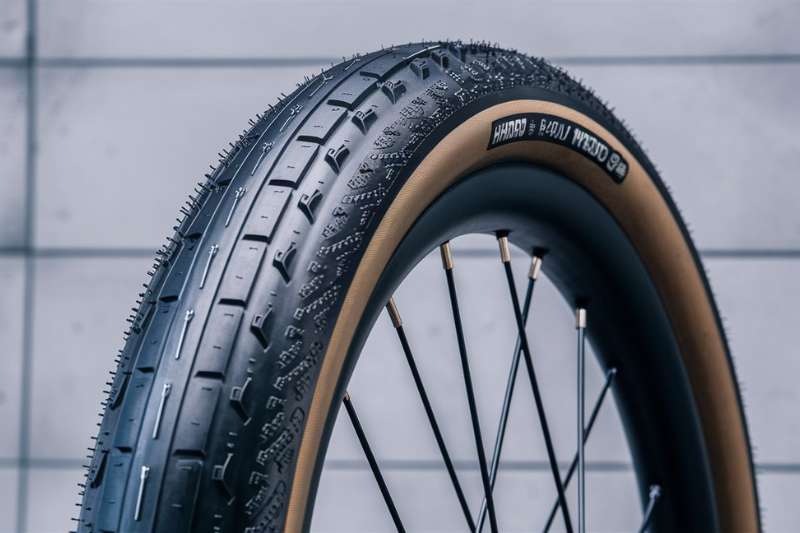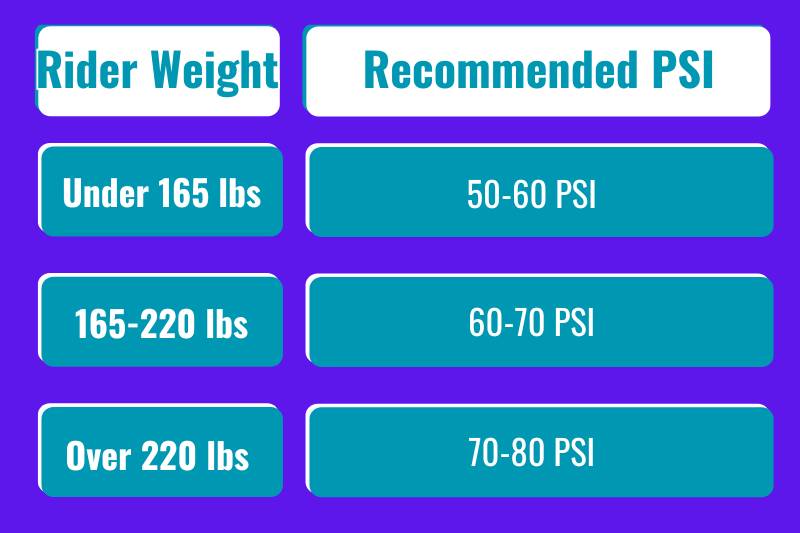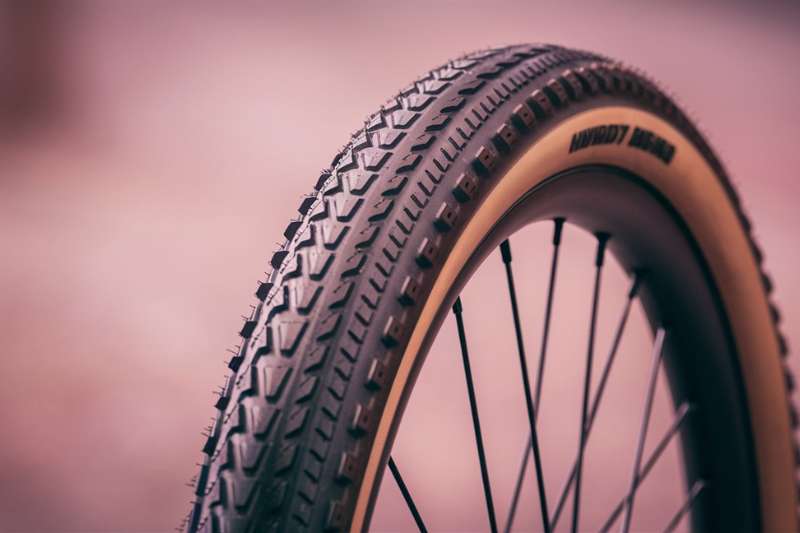Hybrid bike tire pressure typically ranges from 50 to 70 PSI. It’s important for both performance and comfort.
Selecting the right tire pressure for a hybrid bike can significantly improve your riding experience. It balances the need for speed and cushioning, ensuring a smooth and efficient ride. Riders should consider their weight, riding conditions, and personal comfort when adjusting pressure.

Proper inflation reduces the risk of punctures and improves bike handling. By maintaining the recommended PSI, cyclists can enjoy a reliable and comfortable journey, whether they’re commuting or enjoying a leisurely ride. Always use a quality pump with a pressure gauge to ensure accuracy, and check your tire pressure regularly to keep your hybrid bike in top condition.
The Basics Of Hybrid Bike Tire Pressure
Hybrid bike tire pressure is key to a smooth ride. It affects speed, comfort, and grip. Too low, and tires can pinch flat. Too high, and the ride feels hard. The right pressure depends on the weight of the rider and the bike.
For most hybrid bikes, a good starting point is between 50 to 70 PSI. Lighter riders might prefer the lower end. Heavier riders might need the higher end. Always check the manufacturer’s recommendations.

Always use a pump with a pressure gauge to check. This helps you hit the right number.
Factors Influencing Ideal Tire Pressure
The weight of the rider significantly affects tire pressure. Heavier riders require more pressure to maintain optimal performance. Conversely, lighter riders benefit from lower pressure as it decreases the risk of punctures.
Different terrains demand variations in tire pressure. For example, rough trails need lower pressure for better grip, while smooth asphalt calls for higher pressure for increased speed and efficiency. Riders must adjust pressure based on the surface they ride on to ensure safety and comfort.
Tools For Measuring And Adjusting Tire Pressure
Proper tire pressure ensures a smooth ride and increases tire longevity. A pressure gauge is essential for checking this. It’s a simple tool that provides an accurate tire pressure reading.
Choose from digital or analog gauges. Digital gauges are easy to read. Analog gauges require no power and are reliable.

For regular maintenance, a floor pump with a built-in gauge is ideal. For rides, a mini pump or CO2 inflator is practical.
Setting Your Hybrid Bike’s Tire Pressure
Setting your hybrid bike’s tire pressure correctly is important. A proper pressure ensures a smooth ride and prolongs tire life. Begin by locating your tire’s recommended PSI range, usually found on the tire sidewall. Use a bike pump with a pressure gauge to fill the tire. Pump in short bursts, checking the pressure frequently. Aim for the lower end of the PSI range for softer surfaces or more grip. For harder surfaces or faster rides, choose a pressure closer to the upper limit. Always check both tires for even pressure. Consider your weight, the bike’s load, and ride comfort. Adjust as needed for the best experience.
Personal comfort plays a big role in tire pressure adjustment. Riders preferring a softer feel may opt for slightly less pressure. Conversely, a firmer feel often means a bit more pressure. Test out different pressures on short rides around your area. This helps you find the perfect balance for your riding style and comfort preferences.
Common Mistakes To Avoid
Proper tire pressure ensures a smooth ride on your hybrid bike. Overinflation can lead to a harsher ride. High pressure may cause tire bursts or reduce traction. It’s key to stick to the manufacturer’s recommendations.
Underinflation isn’t without issues either. It makes pedaling harder and increases wear. Tires can also overheat, leading to premature damage. Always check pressure before rides for safety and performance.

Maintaining Optimal Tire Pressure
Maintaining the optimal tire pressure for your hybrid bike is essential. It ensures a smooth ride and increases tire longevity. Make it a habit to check your tire pressure regularly. This simple step can prevent many issues associated with under-inflation.
Over time, bike tires naturally lose air. It’s a normal process. But riding on tires with low pressure can cause damage. It can also make pedaling much harder. So, performing regular checks helps you spot any pressure loss early.
- Use a reliable gauge to measure tire pressure.
- Compare the reading with the recommended levels.
- Adjust the pressure if it’s too low or too high.
- Inspect tires for punctures or wear and tear.
Frequently Asked Questions
What Psi Should I Inflate My Bike Tires To?
Check your bike tire sidewall for the recommended psi range and inflate accordingly, typically between 80-130 psi for road bikes and 30-50 psi for mountain bikes.
What Should The Tire Pressure Be On A Commuter Bike?
The ideal tire pressure for a commuter bike typically ranges from 50 to 70 PSI. Always check your bike’s manual for specific recommendations. Proper inflation ensures a smooth ride and extends tire life. Keep a regular check for optimal performance.
What Should The Tire Pressure Be On A Liv Hybrid Bike?
For optimal performance, set your Liv hybrid bike tire pressure between 50-70 PSI, checking the tire sidewall for specific recommendations.
Is 40 Psi Good Tire Pressure?
Yes, 40 psi can be a good tire pressure for some vehicles, particularly those requiring higher PSI for optimal performance. Always check the manufacturer’s recommendation in your vehicle’s manual to ensure the correct pressure for safety and efficiency.
Conclusion
Maintaining the right tire pressure is important for your hybrid bike’s performance and longevity. By keeping these tips in mind, you’ll ensure a smoother, safer ride and extend the life of your tires. Don’t forget to check regularly, and happy cycling!


